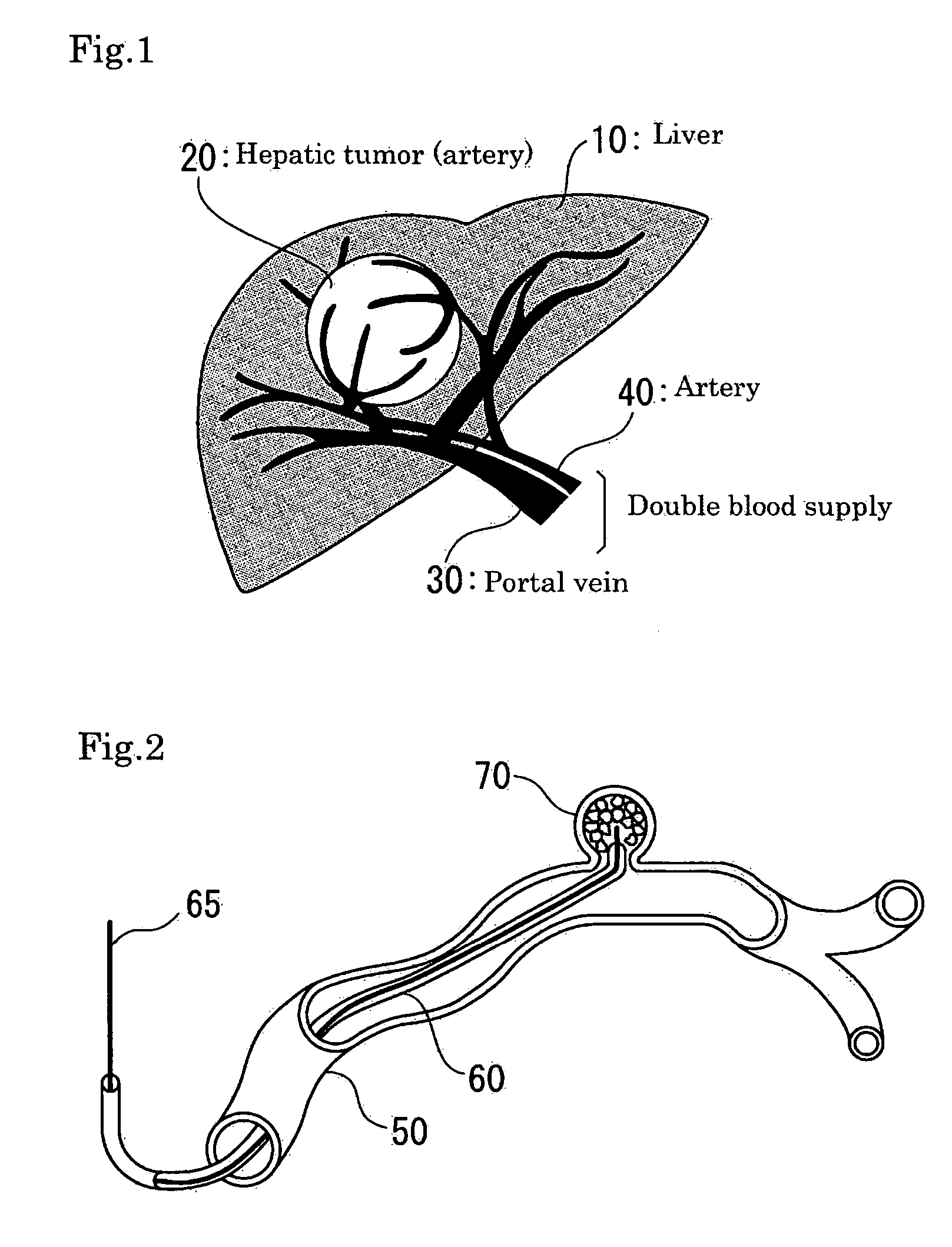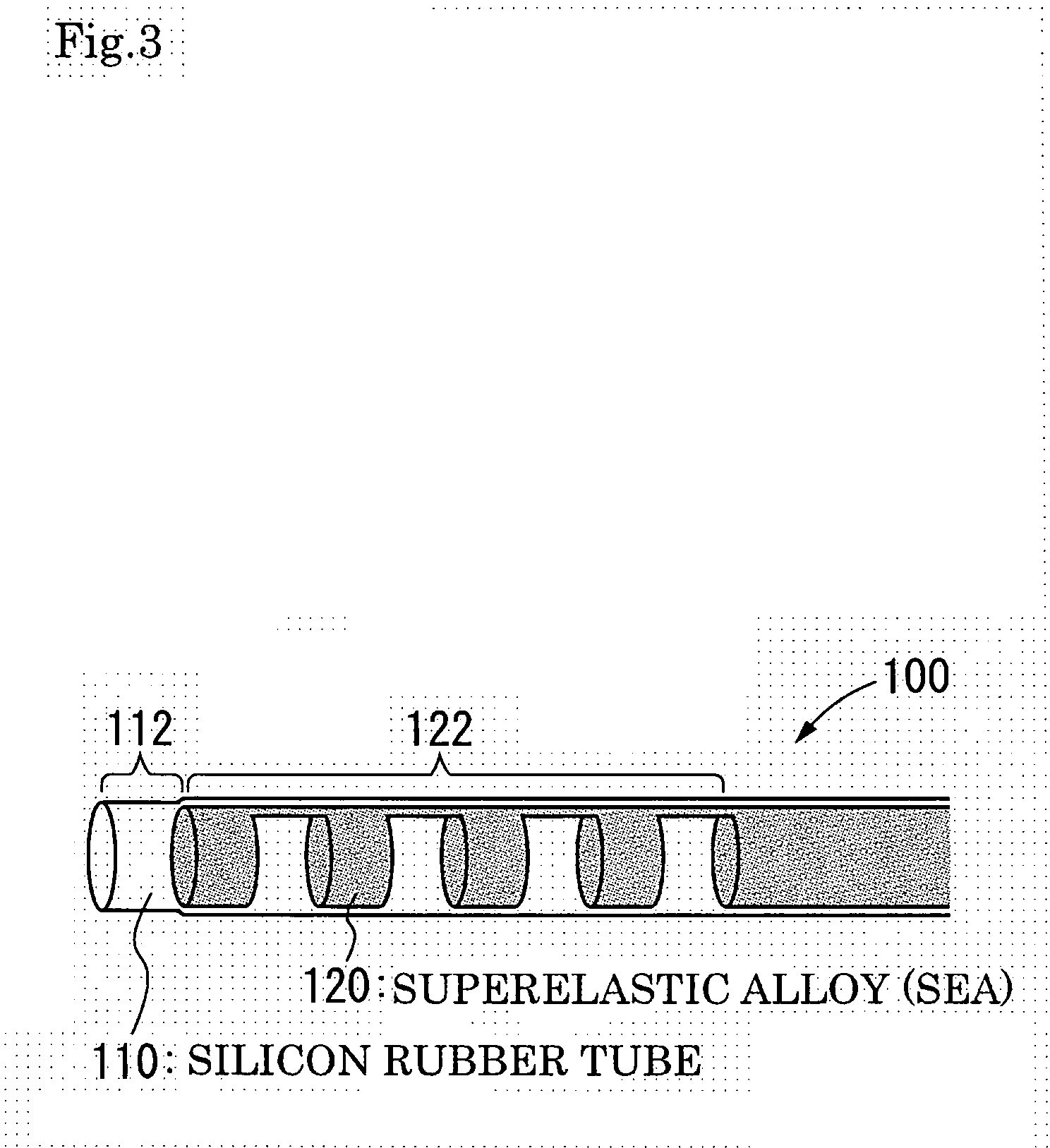Active capillary
a technology of active capillaries and catheters, applied in the field of active capillaries, can solve the problems of inability to give effective treatment, difficult or even impossible insertion, and inability to apply conventional active catheters to peripheral blood vessels of small diameter
- Summary
- Abstract
- Description
- Claims
- Application Information
AI Technical Summary
Problems solved by technology
Method used
Image
Examples
Embodiment Construction
[0027] Now, referring to the drawings, some typical modes of embodiment of the invention are described.
[0028] The structure of an exemplary mode of embodiment of the invention is shown in FIG. 3. FIG. 3 shows a catheter 100 of such a structure that a Ti—Ni superelastic alloy (SEA) tube 120 has its outside covered with a thin-film silicone rubber tube 110. The SEA tube 120 is wrought, at that part whose flexion is desired 122, to cut off a plurality of grooves (crenae) with thin joints left. The covering of the silicone rubber tube 110 is effected without the use of its front end portion 112 in the covering. The silicone rubber tube 110 is filled with physiological saline which is harmless to the living body.
[0029] In an example of the method of cutting grooves (crenae), the cutting can be carried out by inserting a piano wire into an SEA tube with an outside diameter of 0.88 mm and an inside diameter of 0.75 mm, fixing the whole on a stage, and cutting grooves or crenae using a fe...
PUM
 Login to View More
Login to View More Abstract
Description
Claims
Application Information
 Login to View More
Login to View More - R&D
- Intellectual Property
- Life Sciences
- Materials
- Tech Scout
- Unparalleled Data Quality
- Higher Quality Content
- 60% Fewer Hallucinations
Browse by: Latest US Patents, China's latest patents, Technical Efficacy Thesaurus, Application Domain, Technology Topic, Popular Technical Reports.
© 2025 PatSnap. All rights reserved.Legal|Privacy policy|Modern Slavery Act Transparency Statement|Sitemap|About US| Contact US: help@patsnap.com



